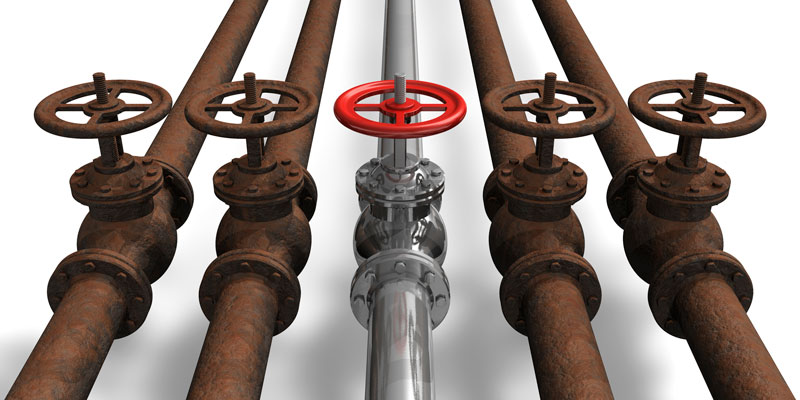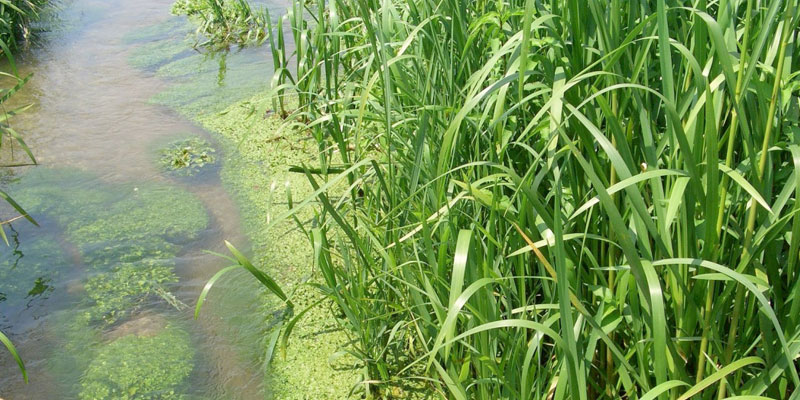Protecting the Integrity of Drinking Water Distribution Systems
Principal Investigator - Michèle Prévost, Ecole Polytechnique de Montréal , 2005 - 2007

Challenge
A significant portion of waterborne disease outbreaks have been shown to be caused by sources of contamination in water distribution systems (DS). These include cross-connections, contamination during repairs and contamination of reservoirs. Studies suggest that the current design and operations of DSs may not fully prevent contamination by intrusion. Research on pilot scale systems has shown that transient negative pressure in the DS provides an opportunity for back siphonage, backflow and intrusion. Canadian systems leakage rates range from 5 to 50%, providing possible entry points for intrusion under certain pressure conditions.
This research was designed to document transient pressures that may be caused by standard maintenance operations such as pumping, flushing or break repairs, and to examine their impact on water quality. To ensure the applicability of the research results to operating DSs, most of the experimental work was conducted on various full-scale municipal DSs across Canada. The results of this research help determine the relative importance of these occurrences and their risk to public health, supporting better decision making and policy development for water authorities. The results also allow design engineers from consulting firms and from utilities to correct and improve the design of DSs based on sound scientific information.
Project
The research project identified four types of risks related to intrusion in a DS: major pipe breaks with loss of pressure, pipe breaks with pressure reduction, planned repairs (pipe leak with pressure maintained) and design/configuration of the system (orifice in main, dead-ends, flushing).
Researchers worked in 2 full-scale DSs (Montreal and Laval), looking at the risk of intrusion related to planned repairs. The research team collected data from 5 repair sites, and analysed the DS structure, water quality and hydraulics. A second study examined the optimization of a microbial indicator to be used to detect intrusion in DS. The study compared spore concentrations in water samples collected from routine sampling points in the DS, and during spot flushing of hydrants and pipe leak repairs with pressure maintained. Using this method, they were able to identify the repairs where potential intrusion took place. Included in this work was a predictive model showing the passage of potential contamination during hydrant flushing according to the hydraulic field conditions. Further studies assessed pipe materials using a pilot DS, and a risk assessment of major pipe breaks with loss of pressure in the Montreal DS.
Field work with the City of Hamilton considered design and operational implications of transients with their impact on physical infrastructure and the quality of water delivered to consumers. Research at the University of Saskatchewan used a network owned and operated by Sask Water, where existing instrumentation included flow, pressure and turbidity sensors, while high speed data loggers were added.
Outputs
- Training courses on transients including water quality evaluation were held in Kamloops, Regina, Hamilton and Montreal. The research team worked with the USEPA in 2005-2006 in their revision of the Total Coliform Rule (TCR). They also reviewed the new series of 10 issue papers on the TCR in Washington DC.
- Researchers shared their results with regulatory agencies to develop new DS regulations. Members of the research team sit on the Quebec RESEAU committee for the revision of Drinking Water regulations as well as the USEPA advisory panel for the revision of the Coliform Rule.
- The information generated by the project was made available to Health Canada and provincial regulatory agencies to provide some of the scientific evidence needed to elaborate guidelines or regulations on DS operation and to better assess the importance of this risk.
Select Publications
- Besner, M.C., Gauthier, V., Trépanier, M., Leclair, M. and Prévost, M. (2005) Interactive analyser for understanding water quality problems in distribution systems. Urban Water Journal 2(2), 93-105.
- Trépanier, M., Gauthier, V., Besner, M.C. and Prévost, M. (2006) A GIS-based tool for distribution system data integration and analysis. Journal of Hydroinformatics 8(1), 13-24.
- Besner, M.C., Gauthier, V., Trépanier, M., Martel, K. and Prévost, M. (2007) Assessing the effect of distribution system O&M on water quality. Journal of the American Water Works Association 99(11), 77-91.
- Cartier, C., Barbeau, B., Besner, M.C., Payment, P. and Prévost, M. (2007) Optimization of the detection of the spores of aerobic spore-forming bacteria (ASFB) in environmental conditions. Journal of Water Supply: Research and Technology-AQUA 56(3), 191-202.
- Besner, M.C., Lavoie, J., Morissette, C., Payment, P. and Prévost, M. (2008a) Effect of water main repairs on water quality. Journal of the American Water Works Association 100(7), 95-109.
Outcomes
- Changes in practice as this information will greatly benefit water utilities by allowing them to improve their daily operation and maintenance activities, support their ability to identify and control vulnerable distribution system locations, and improve rehabilitation strategies by taking into account the risks of water quality failures.
- Potential changes in policy as results were shared with regulatory agencies.




